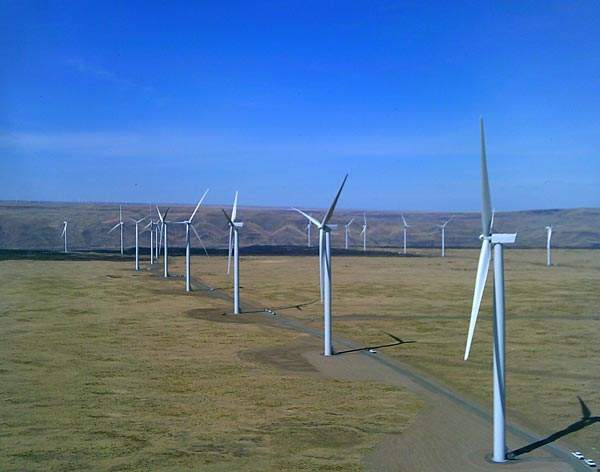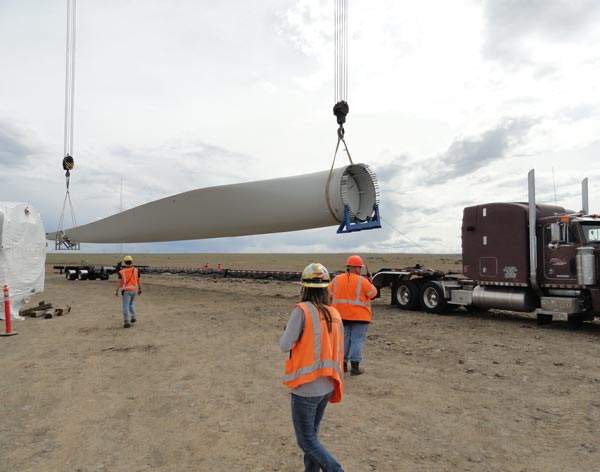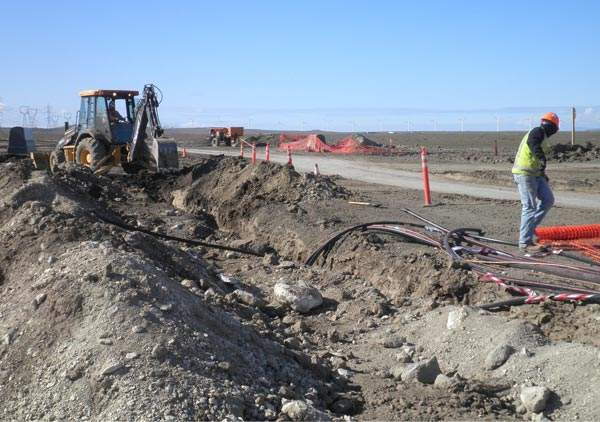Shepherds Flat wind farm is being developed near the Columbia River Gorge in the state of Oregon, US. The 845MW project will be the largest wind farm in the world.
Once operational, Shepherds Flat will overtake the current largest operating wind farm in the US – the 781.5MW Roscoe Wind Farm.
Annual output of the Shepherds Flat wind farm will be 1,797GWh. The project is being developed in three phases at a cost of $2bn. Construction commenced in May 2010 and the first phase is expected to be operational in 2012.
Caithness Energy is the lead developer of the project. Partners in the project include GE Energy Financial Services, Google, Tyr Energy (a unit of ITOCHU) and Sumitomo Corporation.
The US Department of Defense initially opposed the project as the turbines were feared to obstruct the radar system in the region. No evidence regarding this was found and the project was later approved.
Shepherds Flat will supply power to more than 235,000 households. It will help in reducing 1.5 million tons of carbon emissions annually, which is equivalent to taking 200,000 passenger vehicles off road. The project will have a positive economic impact of $16m annually for Oregon. It will also provide 400 jobs during construction and 35 after commencing operations.
Coverage area of Shepherds Flat wind farm
Shepherds Flat will cover an area of 80 square kilometres, including the Gilliam and Morrow counties of Oregon. The area is one of the best known regions for wind development, with wind speeds of up to 6.7m/s.
The project includes 338 wind turbines, with a 2.5MW capacity each. It also includes the development of 152km of roads and 267km of transmission lines.
GE Energy is supplying its high-efficiency 2.5-100 wind turbines for the project under a $1.4bn contract awarded in December 2009. The turbines feature permanent magnet generators, which help in increasing efficiency and reliability while reducing electricity generation and transmission costs. They are designed to generate the highest annual energy production in their class.
Shepherds Flat will be the first project in the US to use the turbines, although they have been operating in Europe and Asia. The turbines are being fabricated at GE’s factory in Pensacola, Florida. GE is also responsible for providing ten years of operation and maintenance services.
The first turbines of the project arrived on site in May 2011.
Project finances and backing for the largest wind farm in the world
In December 2010, the US Department of Energy announced a partial loan guarantee of $1.3bn for the project. The loan is being arranged by a group of 26 financial institutions led by Citibank, Bank of Tokyo-Mitsubishi UFJ, WestLB and RBS Securities.
The loan is being provided as part of the Recovery Act. Shepherds Flat is the sixth project to receive financial assistance under the Recovery Act.
Google announced its decision to invest $100m in the project in April 2011. Shepherds Flat is the largest investment made by Google in renewable energy.
ITOCHU and Sumitomo Corporation are jointly investing $400m in the project.
Distribution of electricity / power generated by Shepherds Farm
Electricity generated by the project will be sold to Californian utility company Southern California Edison, through a 20-year purchase agreement. The project will help the utility company meet the 33% renewable energy by 2020 mandate.
Contractors involved with Oregon’s 845MW renewable energy project
GL Garrad Hassan provided engineering, technical and construction management services for the project.
Other services included technical assessment of the project area, installation of equipment and construction.
Mott MacDonald provided technical and financial analysis for the project. It also assisted in achieving financial closure for the project.
Daws Manufacturing supplied heat exchangers for the turbines. Hot-dip galvanising was used by Daws to protect the heat exchangers from corrosion.
Blattner Energy is the general contractor for the project. Pacific Coastal Steel has been subcontracted by Blattner for providing steel reinforcements for 303 wind turbines. The subcontract is valued at $6.4m.




